Today is Good Friday and here in Bermuda is all about codfish cakes, hot cross buns and flying homemade traditional Bermudian kites. It was a great SW breeze, sunny and low humidity today, possibly the most perfect day to fly kites! Mine didn't go so well though, flew for a bit and then the spindle I was holding broke into two and got out of my hands. I chased the remaining bit as the kite soared away before it got stuck in an oleander hedge. The kite lost control and crashed in the neighbour's garden. Sadly they were away and have three really scary dogs, who savaged the kite! Oh well.... next year we will go to the beach to fly it instead. So, no photos of the kite. Bermudians take a huge amount of pride in kite making and there are a lifetime of tips and tricks to learn. They are quite fiddly to make and require some patience. My friend Hannah is an artist and produced the kite of a lizard that is shown below for the Ag Show last week. Today she was making a sandcastle version of a baby T-Rex being hatched from an easter egg at Horseshoe Bay.
Anyway, after my disastrous excursion into paper aviation, I sat and watched others being far more successful and thought about how kites actually fly......
Once the kite is airborne there are four forces acting on it: weight, drag, lift and the tension of the string. The lift force is the most important and the one that holds the kite aloft. Lift is generated when air flows over the surface of the kite as it is held at an angle to the wind. This angle is critical and is known as the 'angle of attack'. If the angle is too shallow, there is not much lift generated and the kite falls. If the angle is too steep, the air flow is disrupted by the kite and the kite stalls and falls down. So, being able to control this angle is critical to a successful kite. The higher the kite is, the stronger the wind speed and the greater the lift.
Once the kite is airborne there are four forces acting on it: weight, drag, lift and the tension of the string. The lift force is the most important and the one that holds the kite aloft. Lift is generated when air flows over the surface of the kite as it is held at an angle to the wind. This angle is critical and is known as the 'angle of attack'. If the angle is too shallow, there is not much lift generated and the kite falls. If the angle is too steep, the air flow is disrupted by the kite and the kite stalls and falls down. So, being able to control this angle is critical to a successful kite. The higher the kite is, the stronger the wind speed and the greater the lift.
The angle of attack is controlled by:
Hummers - these are strips of tissue that are mounted on strings from the headstick to the top of the curved section. They are free to vibrate and produce a loud noise. Hannah's hummers are white with black spots on them. If made from stiff paper (grocery bags) or plastic they can be very loud and extremely annoying!
- Placement of the bridle (called 'de loop' by Bermudians). The measurements of these are very precise. The one from the middle must be as long as the top curved section, the two that come from the ends of the curved section must go to an inch below the centre of the kite sticks. If these are incorrect, the angle of attack won't be within flight range.
- The angle and tension of the kite string - must be forwards and downwards! Which is why it is so important to pull downwards a bit on the line as the kite is being thrown upwards when it is being launched.
- The drag and weight of the kite - which is significantly affected by the length and weight of the tail - usually lengths of bed sheets that have been torn up and knotted together. Note that the centre of mass of the kite is moved backwards from the geometric centre by the mass of the tail.
Hummers - these are strips of tissue that are mounted on strings from the headstick to the top of the curved section. They are free to vibrate and produce a loud noise. Hannah's hummers are white with black spots on them. If made from stiff paper (grocery bags) or plastic they can be very loud and extremely annoying!
One year, some inventive people from St David's tried to launch a huge kite made from 12' lengths of 2" x 4" timber. Unfortunately, despite being dragged by a pick-up truck, it was not successful. The reason was obvious to me as a physicist, unless it was blowing a gale the lift generated would not exceed the weight of the kite until the kite was very high and the angle of attack from a 'normal' style launch would be too steep and the kite would stall. Possibly if they had chosen a really windy day and mounted the kite at a shallow angle on top of the pick-up truck with a securely mounted spool for the line, and then they drove fast down a road straight into the wind - unspooling the line as the kite gained lift - they may have been successful!
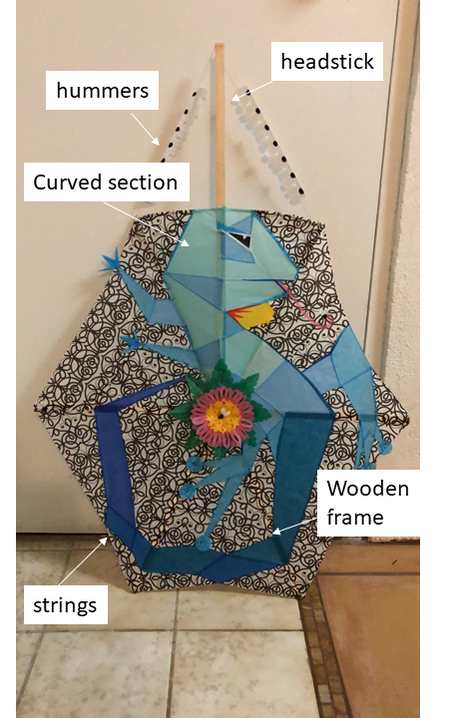
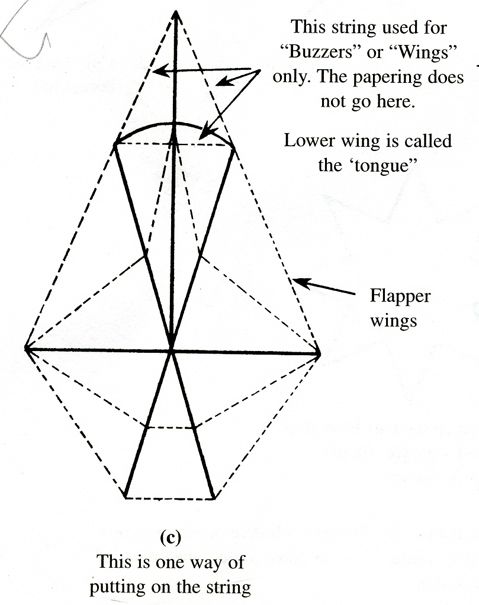
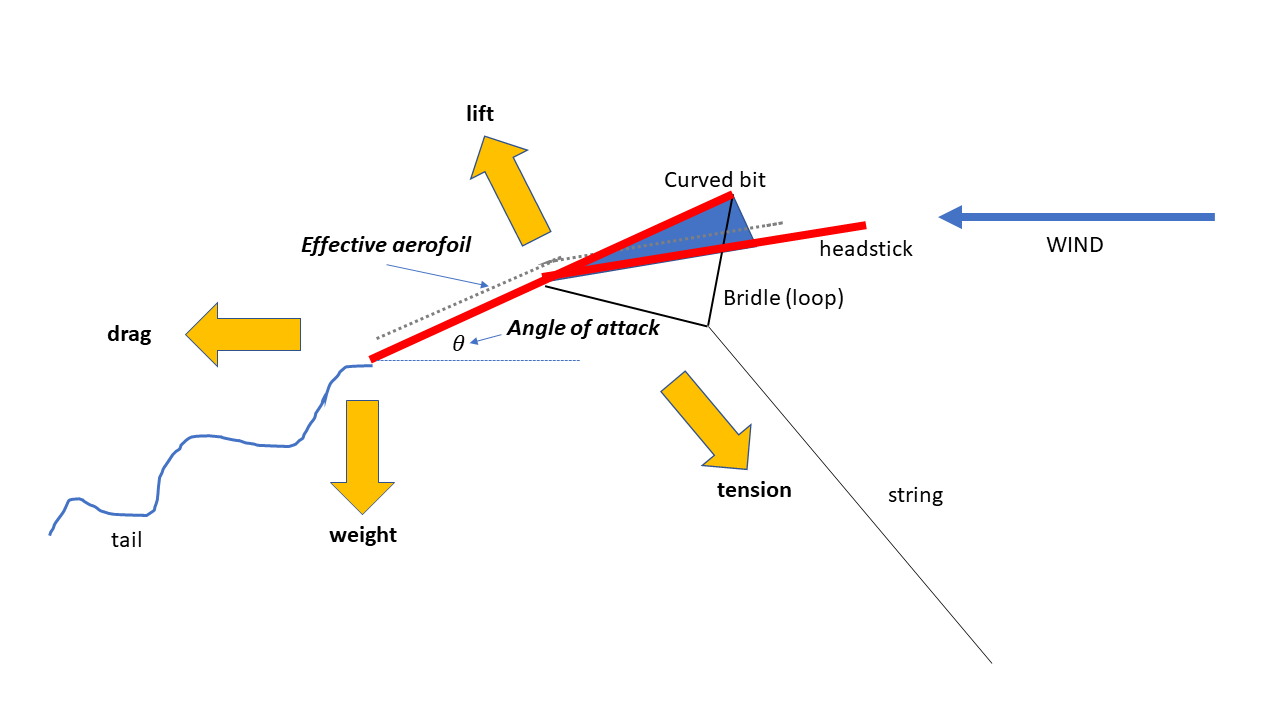
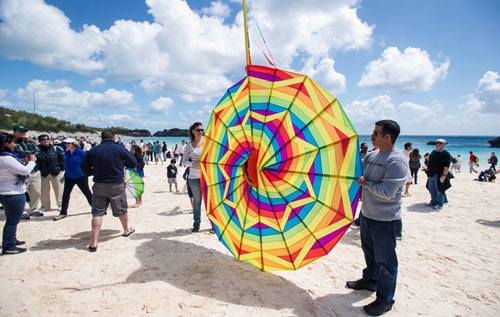
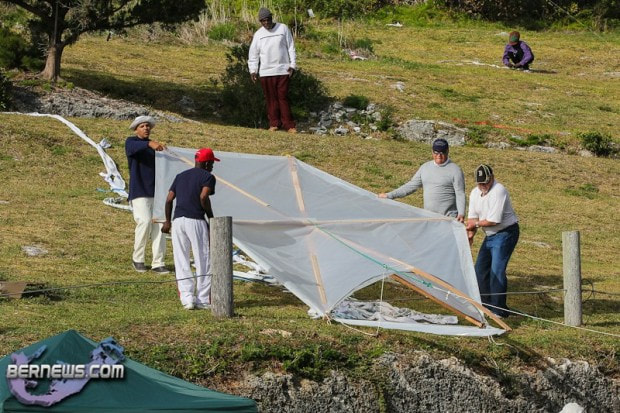
 RSS Feed
RSS Feed